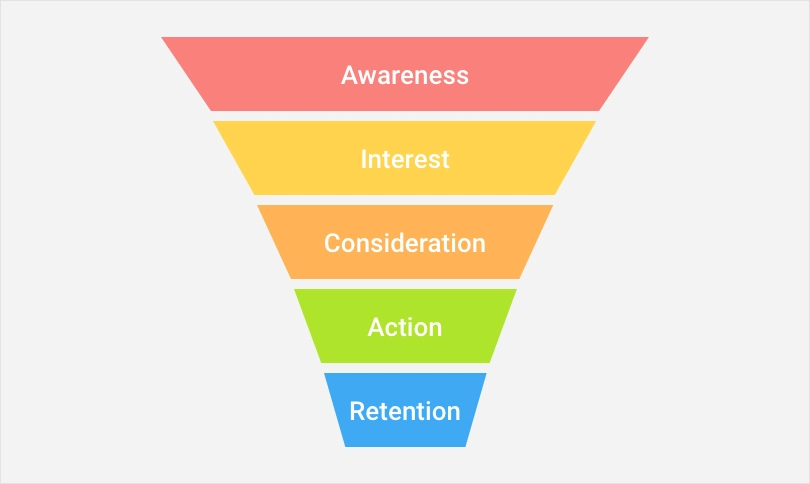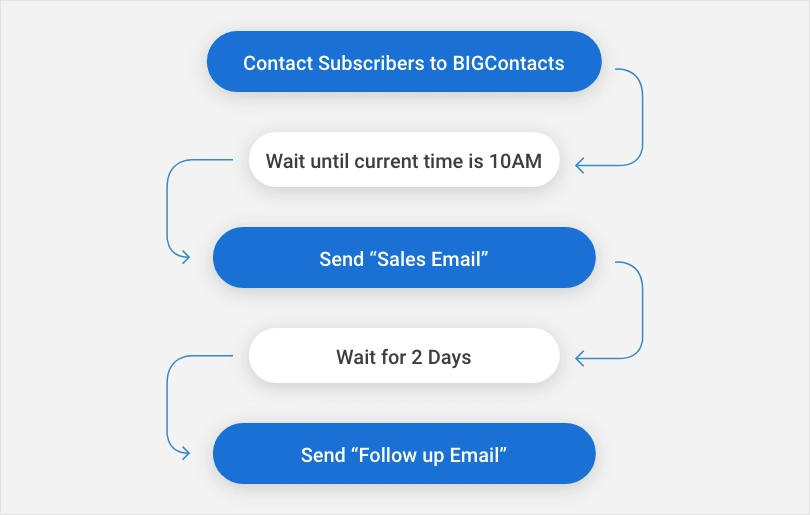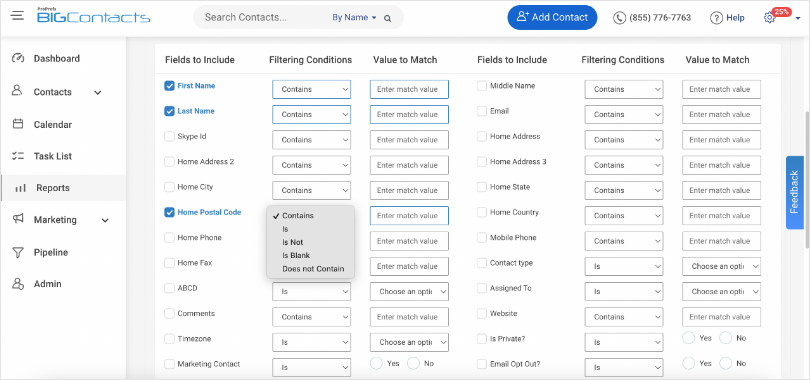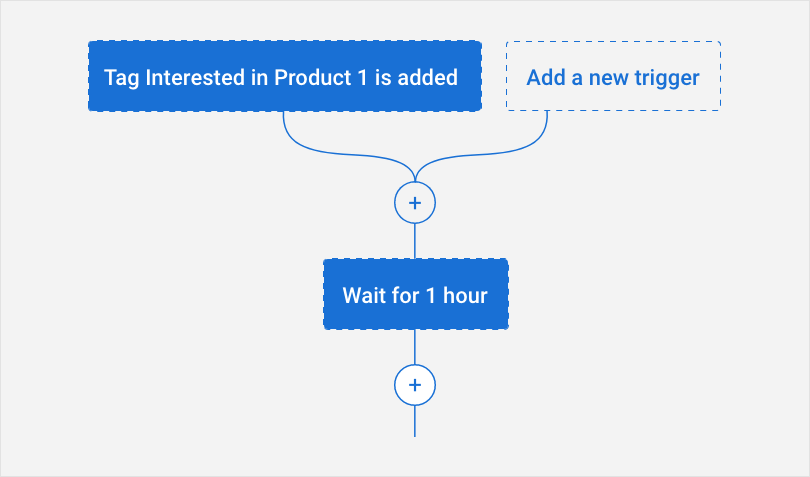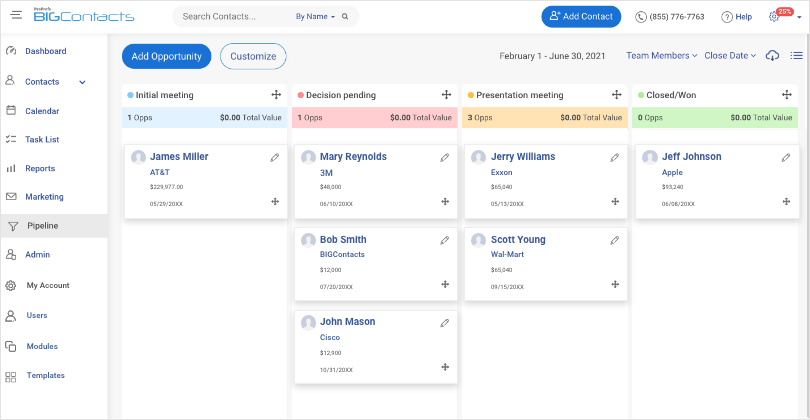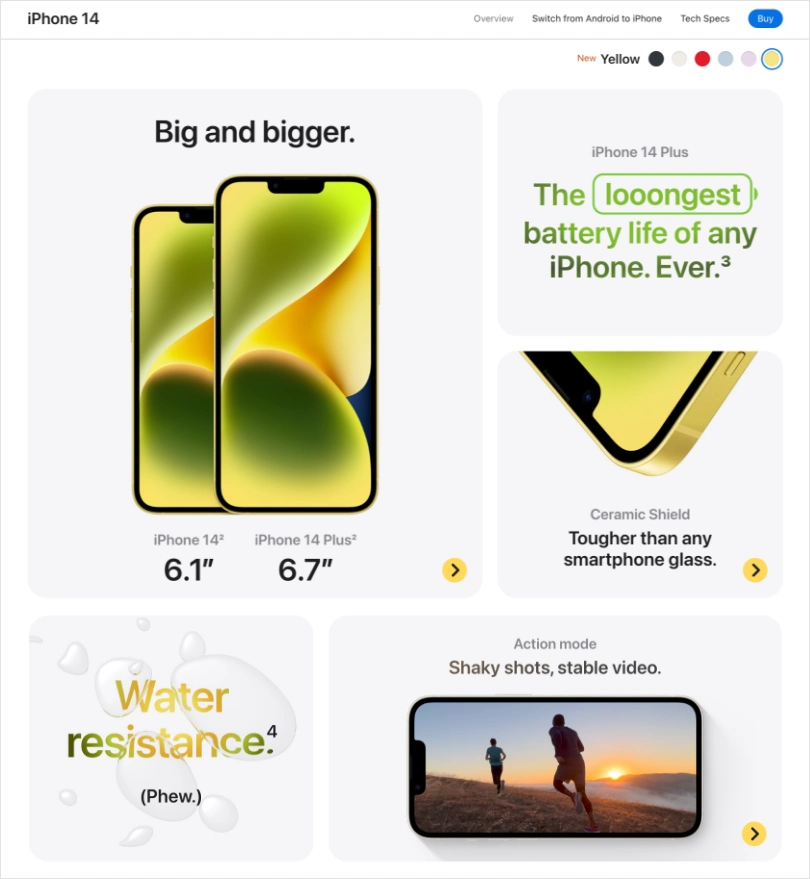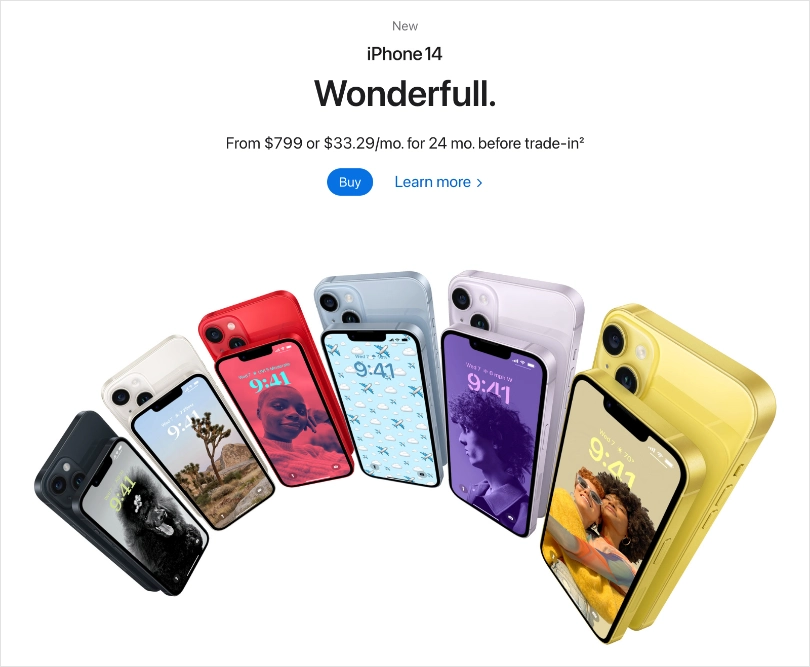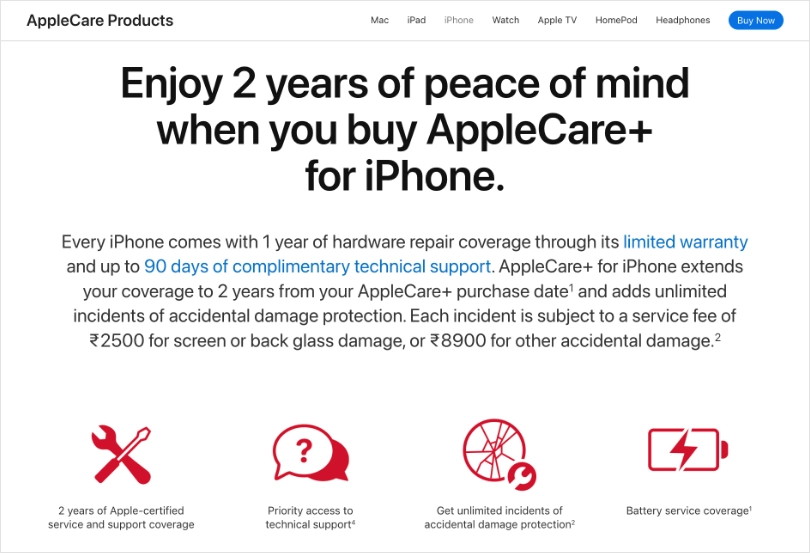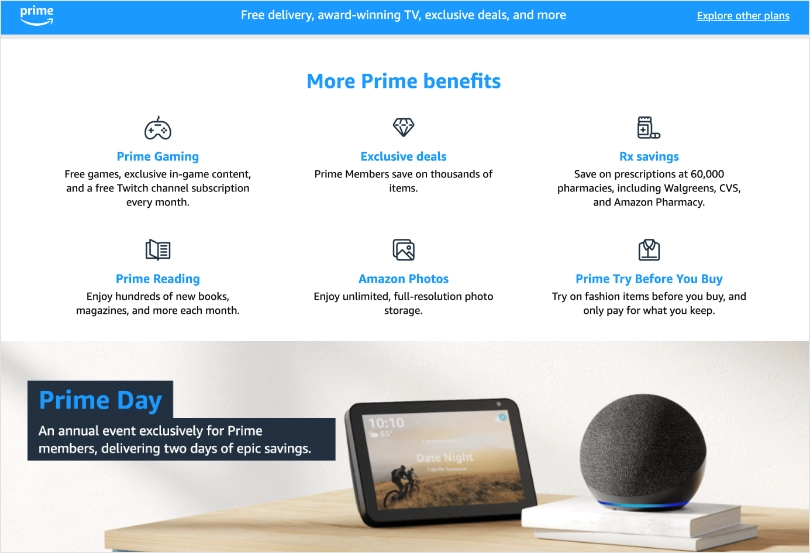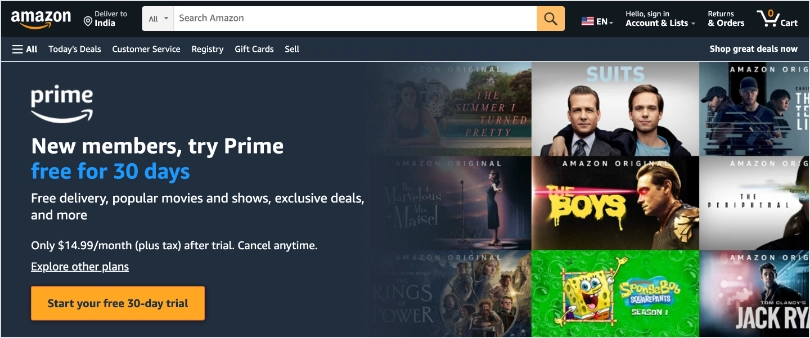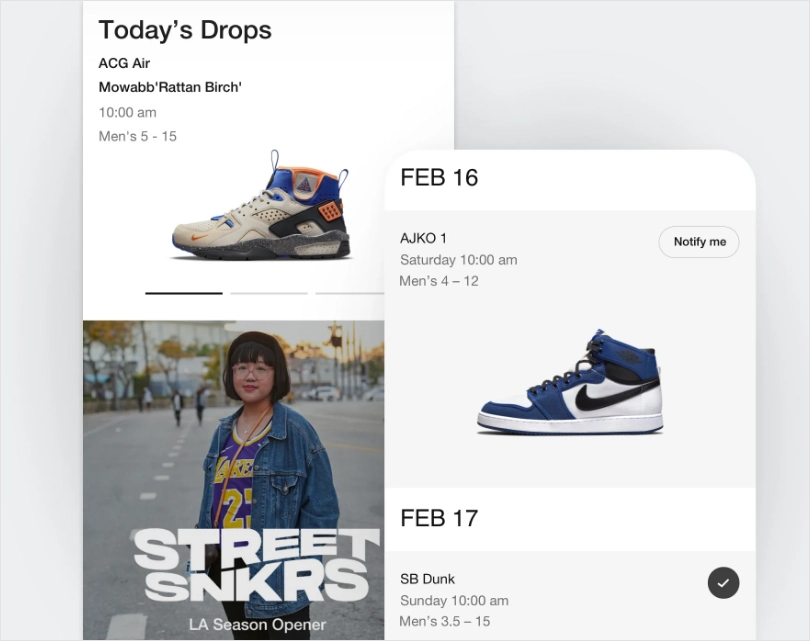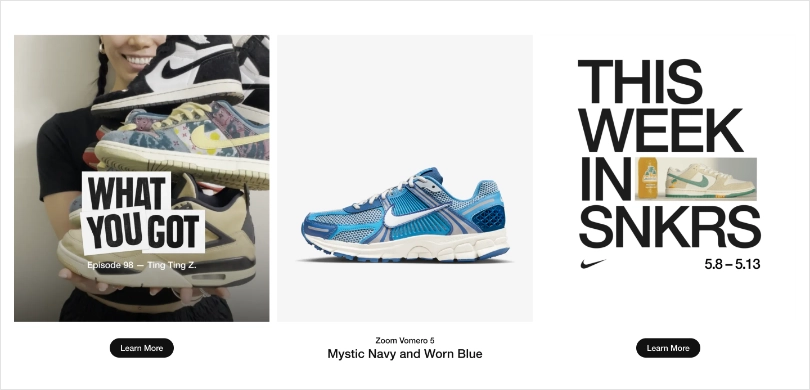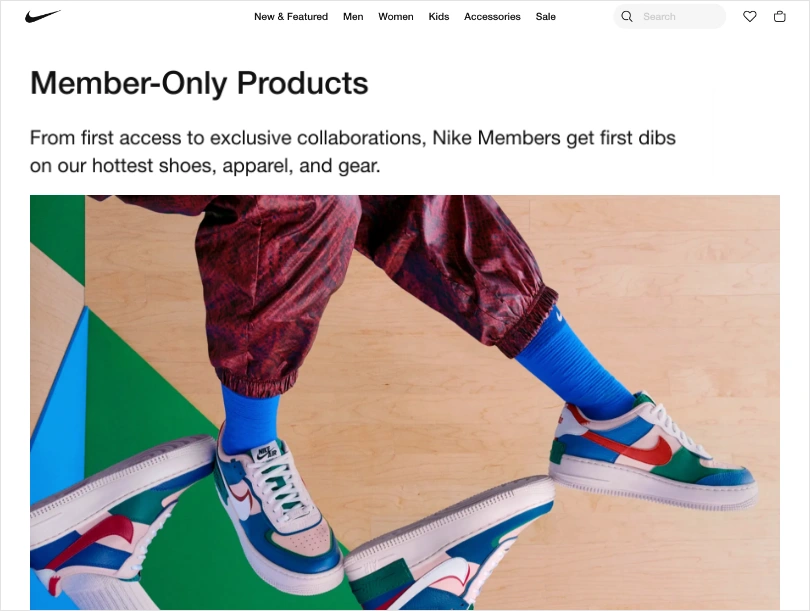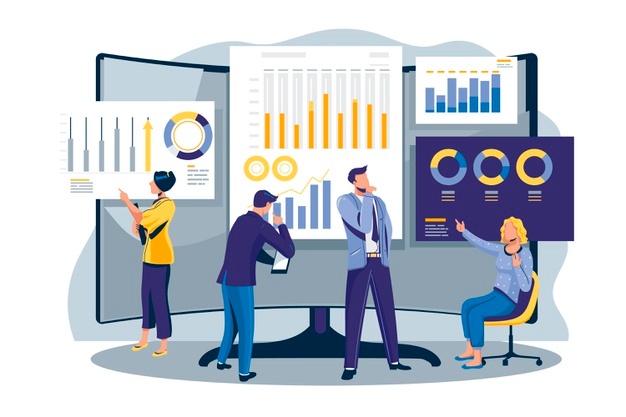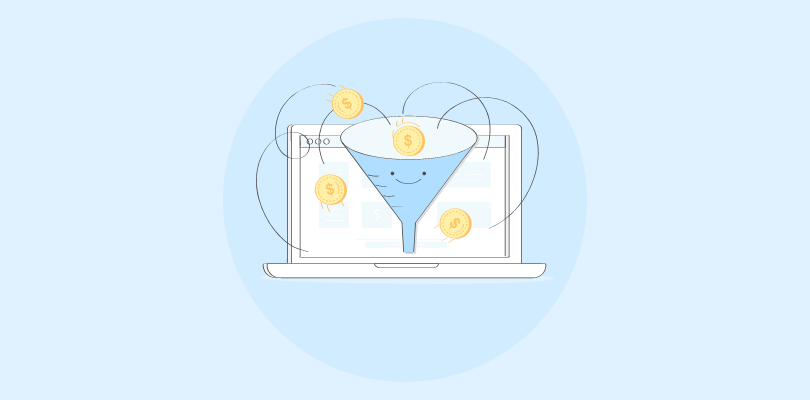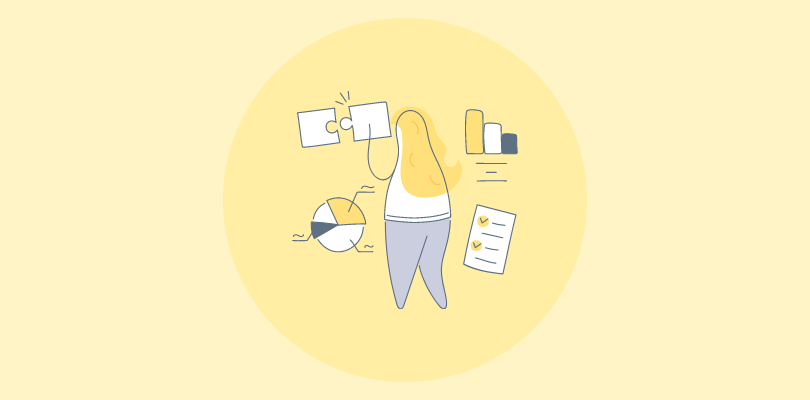Crafting the perfect product, conducting detailed research, multiple follow-ups, demos, and extensive nurturing – all to end up with a prospect leaving without buying!
Whether you are a thriving business or an emerging startup, losing a sale is a familiar pain.
And more often than not, it can leave you wondering — what went wrong with my sales funnel planning?
Imagine you could build a system that automates and streamlines the sales process.
That’s what a sales funnel can do for you!
It guides potential customers through the steps of becoming paying customers. Think of the funnel as a journey that prospects embark on, starting from discovering your brand and gradually reaching the glorious moment where they convert into customers.
If you are tired of pouring your heart and soul into your business, only to see leads slip through the cracks, it’s time to get started with sales funnel management.
This guide will walk you through the nitty-gritty of sales funnels, helping you drive growth and maximize success.
It’s time for you just to sit back and watch the money roll in!
What is a Sales Funnel?
A sales funnel represents the stages a prospect should pass through before converting into a customer. It is an effective way to identify potential customers, nurture them through the buying process, and turn them into loyal customers.
It is often depicted as a funnel because the number of prospects typically decreases as they move from awareness to purchase.
It’s an exciting journey – from the prospects discovering your offerings to finally making a purchase.
The sales funnel demonstrates exactly how potential customers move through this process. It can help you identify which marketing and sales activities are the most effective at nudging prospects toward the purchase decision.
With insights into what the prospects do and want at every stage of the sales process, you can ensure that you close more deals.
The most significant benefits of a sales process funnel are listed below:
- The visibility provided by a sales funnel can be leveraged to improve your marketing campaigns. Use the insights to improve your messaging and allocate resources judiciously.
- One of the most significant advantages of sales funnels is that they prevent leads from getting lost in the process.
- With a consistent process in place, your sales representatives know the best ways to approach the prospects at every stage. This improves team productivity.
- Sales funnels help improve your forecasts, discover roadblocks in the sales process, and make better business decisions.
- The right sales funnel helps find out which marketing channels generate the best leads, allowing you to allocate your marketing budget smartly.
How Does a Sales Funnel Work: From Traffic to Conversion
96% of website visitors are not ready to make the purchase right away!
To turn these prospects into high-paying customers, you require effective lead nurturing.
A well-defined sales funnel is an essential component of this process, helping you deliver the right message at the right time. With tangible data on how leads progress from one stage to the next, you can utilize your time and resources successfully.
A funnel for sales works by leading potential buyers through a series of steps to convert them into customers. It involves:
- Capturing attention
- Nurturing interest
- Presenting compelling offers
- Addressing objections
- Motivating prospective customers to take the desired action
The funnel operates on the principle of narrowing down the pool of prospects as they progress through each stage, with the ultimate objective of maximizing revenue growth.
Decoding the Stages of a Sales Funnel
Simply put, the sales funnel system looks somewhat like this:
The prospect finds your business, evaluates your offer, and then makes the final decision.
The fundamental structure remains intact, while the names or number of stages may vary from one organization to another. Essentially, the funnel can be divided into three parts-
- Top – Sales functions that attract prospective customers are placed at the top of the funnel.
- Middle – All the efforts that go into converting leads into customers fall within this part of the funnel.
- Bottom – This part of the funnel involves the actual purchase and post-purchase support.
These can be further broken down into the following stages.
Awareness:
Regardless of your industry, the first step in the sales cycle is awareness.
Prospective customers are on the lookout for products that address their unique needs. Grasp their attention at this stage and direct it toward your business.
You can accomplish this through channels like advertising, cold emailing, surveys, and social media.
What it includes: Since the prospects are not ready to buy yet, the awareness stage should focus on educating them about what you do. You can offer how-to videos, blogs, ebooks, etc., at this stage.
Interest:
This stage is where prospects demonstrate an interest in your product or service. Once the prospects have a better understanding of their own problems and how you can help them, it’s time to initiate contact.
What it includes: In the interest stage, the prospect is researching your product or service, along with considering other alternatives. Therefore, you must approach them with detailed content to help them gain clarity over what’s right for their business.
Consideration:
The next stage is “consideration”.
At this stage, the prospect is evaluating the available information to reach a decision. This stage provides you with the opportunity to offer a unique proposition to your prospects and try to solve their specific challenges.
What it includes: You need to let them know about the value you can offer and what sets you apart from the competition. Sales calls, seminars, guides, white papers, etc., should be a part of the consideration stage.
Decision/Action:
The goal of the decision stage is to alleviate any remaining doubts or objections. By providing compelling reasons and demonstrating the value and benefits of the offering, you can increase the likelihood of conversion.
What it includes: Provide necessary resources to help potential customers make an informed decision.
This can include product demonstrations, case studies, customer testimonials, pricing details, and any other relevant information that addresses their specific concerns or questions.
Retention:
Once you have acquired customers, you must aim to retain them and maximize their lifetime value.
Demonstrating ongoing value and addressing issues helps foster customer loyalty. Effective communication plays a crucial role in the retention stage. Stay in regular touch with customers through email newsletters, personalized offers, and social media engagement.
Additionally, you can gather feedback and actively listen to customer concerns, resolving any issues promptly to enhance customer satisfaction.
What it includes: Retention efforts involve loyalty programs, rewards, and exclusive benefits to incentivize customers to stay engaged with the brand.
By continuously delivering value, you can increase customer retention rates, foster customer advocacy, and generate a steady stream of repeat business.
The Importance of Sales Funnel Optimization in Achieving Unparalleled Growth
The sales process is mostly unpredictable.
Therefore, you require ongoing monitoring and optimization of the sales funnel. By fine-tuning each stage, you can enhance conversion rates, improve customer experience, increase revenue, and stay relevant in an ever-evolving marketplace.
Closely monitoring market trends, analyzing customer feedback, and keeping a pulse on industry developments, enables you to make proactive adjustments. This adaptability ensures that the sales process remains effective in capturing and converting leads.
Sales funnel optimization can help you:
Enhance Conversion Rates:
The primary objective of a sales funnel is to drive potential customers through a series of steps that lead to a purchase. However, not all prospects smoothly transition from one stage to another, and conversion rates can suffer as a result.
This is why you need effective funnel management.
Analyzing data, A/B testing, and refining key elements such as messaging, design, and calls-to-action help streamline the funnel and increase the likelihood of conversions.
Improve Customer Experience:
75% of executives believe that a top-notch customer experience is vital to their company’s survival.
A well-optimized sales funnel ensures that potential customers have a smooth journey from initial awareness to the final purchase decision. This ultimately strengthens brand loyalty and encourages repeat purchases.
Understanding the target audience’s needs can help deliver personalized content at each stage. This tailored approach enhances customer satisfaction, builds trust, and fosters long-term relationships.
Maximize ROI:
Continuous optimization of the sales funnel helps identify inefficiencies and areas of improvement, making it possible to allocate resources wisely.
This iterative approach ensures that every dollar spent generates the highest possible return, maximizing overall ROI and profitability.
Monitoring key metrics, like cost per acquisition (CPA), customer lifetime value (CLV), and conversion rate, enable data-driven decisions, which in turn facilitate business growth.
Adapt to Market Dynamics:
Market dynamics are constantly evolving, influenced by factors such as customer behavior, competition, and emerging trends. Continuous optimization of the sales funnel enables you to stay agile and adapt to these changing dynamics.
Additionally, you can identify bottlenecks and friction points that impede conversions which helps you thrive in a fiercely competitive business landscape.
Creating a Sales Funnel: A Step-by-Step Process
A well-defined sales funnel makes it easier to capture, qualify, and convert leads. It can help deliver appropriate content to nudge prospects in the right direction.
For instance, a lead at the top of the sales funnel can benefit from educational resources about the product and the industry. On the other hand, leads in the later stages would be more interested in how your business caters to their unique needs.
To build an effective sales funnel, you must:
1. Understand Your Target Audience
Who are you trying to reach? What are their needs and wants?
Customer personas are critical for building sales funnels. Gain a deep understanding of your target audience by conducting adequate market research.
Identify their demographics, pain points, motivations, and purchasing behaviors. This information will help you modify your marketing messages and offers to resonate with potential customers.
2. Map Funnel Stages
Take some time to analyze your existing sales process.
Which stages result in the most lost opportunities? What hampers the effectiveness of your sales process?
Then, map out distinct funnel stages that align with the buying process. Typically, these stages include awareness, interest, consideration, decision, and retention. Determine the specific actions, content, and touchpoints relevant to each stage.
3. Create Valuable Content
Your prospects wish to learn more about your offerings as they progress through the buyer’s journey. Tailor your supporting content to meet the specific needs and preferences of your audience, offering solutions and demonstrating your expertise.
Create engaging content for each stage of the sales funnel and craft automated drip campaigns to get in touch with the prospect at the most favorable time.
For instance, you can provide educational resources to generate interest in the awareness stage. The interest and consideration stages can focus on showcasing your products or services and addressing common objections. In the decision stage, provide persuasive content to encourage conversions.
4. Stay Connected at All Times
Utilize a mix of marketing channels to reach and engage with your audience at different touchpoints. This can include social media platforms, email marketing, paid advertising, events, and direct sales outreach.
Use each channel strategically to amplify your message and drive traffic to relevant funnel stages. Consider the communication preferences of your target audience to select the most effective channels for reaching them.
5. Monitor Outcomes & Enhance Efficiency
It’s important to track how your sales funnel is performing, so you can make prompt adjustments. Track metrics like website traffic, conversion rates, lead quality, engagement levels, and customer acquisition costs.
Analyze the data regularly to identify bottlenecks, areas of improvement, and high-performing strategies. Use this information to generate detailed reports, optimize your sales funnel, make data-driven decisions, and allocate resources effectively.
How to Optimize a Sales Funnel: Proven Strategies to Drive Success
A stagnant sales funnel can hinder growth and limit success. Optimization is not a one-off task but an ongoing commitment to improving performance.
Here are some techniques that can help:
Routinely Monitor Sales Metrics:
Indicators of issues with your sales funnel include the sales cycle being longer than average, most of your leads going cold, or a considerable drop in the conversion rate.
If you notice such problems, you need to revisit your sales funnel and make the required changes.
Make a note of actions that drive the most conversions and try to identify what your sales cycle is currently missing out on. Track your sales and address any hurdles immediately.
Monitor how the audience responds to your emails, landing pages, and other marketing campaigns. Pay attention to what fares well with your target audience and use this information to tweak your sales strategy.
Leverage A/B Testing:
A/B testing helps optimize an existing sales funnel by experimenting and comparing different variations of key elements.
By testing alternative versions of landing pages, calls-to-action, or email subject lines, you can determine what performs better in terms of conversion rates.
This data-driven approach helps you identify effective strategies, make informed decisions, and continuously improve the sales funnel for optimal results.
Evaluate Lead Potential With Scoring:
To maximize your conversions, concentrate your efforts on leads with a high potential for success. This involves evaluating and categorizing leads based on their likelihood to convert.
By effectively qualifying the leads that enter your sales cycle, you significantly increase the chances of boosting your overall results.
Additionally, this prevents your sales funnel from getting cluttered with irrelevant leads, enabling you to focus your attention on valuable prospects.
Read More: 10 Lead Scoring Best Practices to Improve Your Sales Lead Quality
Segment Potential Customers:
Segmentation helps optimize an existing sales funnel by enabling you to tailor your marketing and sales efforts to specific customer groups.
By dividing the target audience into lists based on demographics, behavior, or preferences, you can create personalized messaging, offers, and experiences that resonate with each segment.
This improves engagement, increases conversion rates, and enhances the overall effectiveness of the sales funnel.
For instance, let’s consider a software company that offers project management solutions.
They can segment their target audience based on industries such as IT, construction, healthcare, and manufacturing. By doing so, they can develop tailored messaging and value propositions for each segment.
Automate Processes to Enhance Efficiency:
According to McKinsey, more than 30% of sales activities can be automated.
By automating your sales funnel, you eliminate the risk of missing out on important opportunities. It enables you to share personalized and relevant content with prospects based on specific triggers.
Automation also contributes to an enhancement in organizational productivity by eliminating manual efforts, reducing errors, and delivering timely reminders.
Use a Dedicated CRM Tool:
A powerful CRM (customer relationship management) system can considerably enhance the outcomes of your sales funnel. It can provide you with a central repository of sales data, helping improve customer relationships and grow sales.
You can use it to track leads using a visual sales pipeline, manage emails, monitor team performance, and analyze trends. When choosing a CRM, make sure it seamlessly integrates with your headless commerce platform and marketing automation tools to ensure a seamless flow of customer data and activities across all these systems.
Furthermore, an intelligent CRM tool can help you make accurate forecasts and predictions. This can help you allocate your time and resources more efficiently.
Challenges in Creating & Optimizing a Sales Funnel
Following are some common challenges faced by businesses regarding sales funnel management.
Understanding the Target Audience:
A lack of understanding about your target audience can hinder the targeting and engagement efforts, limiting your success.
To overcome this challenge, you require thorough market research.
For businesses targeting global markets, ensuring that their marketing content is accessible and effective across different regions can be a challenge. This is where ISP proxies come into play, helping businesses test and optimize their sales funnel by simulating user experiences from various locations.
By identifying the needs, preferences, pain points, and behavior of your target audience, you can gather valuable insights that inform your strategies. This, in turn, enhances your ability to connect with potential customers.
Aligning Marketing & Sales:
Collaboration between marketing and sales teams can increase the likelihood of closing deals by up to 67%.
However, merging these two departments can often feel like bringing together two different worlds, posing a challenge for many businesses.
To overcome this obstacle, you must foster communication, establish shared goals, and adopt a unified approach to generating and nurturing leads. Breaking down silos and promoting collaboration can bridge the gap between marketing and sales, increasing the likelihood of closing deals and driving overall success.
Inadequate Sales Funnel Training:
Equipping sales representatives with the necessary skills to navigate each stage of the funnel can be a daunting task.
Challenges arise in developing a training program that addresses the diverse needs of the sales team and helps them guide leads through the funnel.
This includes providing comprehensive knowledge of the sales process, effective communication techniques, objection-handling strategies, and closing techniques.
Moreover, you need to continuously update the training program to keep up with evolving market dynamics, customer behaviors, and competitive landscapes.
Providing Valuable & Relevant Content:
The challenge lies in creating content that not only attracts attention but also addresses the unique pain points and challenges faced by potential customers at each stage of the sales funnel.
The diversity of target audiences and the variety of channels and platforms they use further complicate the challenge of delivering relevant content.
Maintaining consistency across various channels and formats while tailoring content to meet the preferences and expectations of different segments can also be demanding.
To address this challenge, invest in comprehensive content strategy, ongoing research, and data analysis to create and deliver content that resonates with leads at each stage.
Nurturing Leads Effectively:
Another challenge is the need for consistent follow-up. Leads often require multiple touchpoints before making a purchasing decision. However, striking the right balance between being persistent and respectful can be difficult.
Overwhelming leads with excessive communication can lead to disengagement, while insufficient follow-ups may result in missed opportunities.
Additionally, lead nurturing requires effective tracking and measurement.
Gauging the effectiveness of nurturing strategies and determining which approaches yield the best results can be challenging. As a result, it becomes difficult to refine the nurturing process for better conversion rates.
To overcome this challenge, you must invest in robust lead nurturing strategies, leverage marketing automation tools, and establish clear processes for tracking and analyzing results.
Sales Funnel Success Stories: Unveiling 3 Proven Examples
Read on for an in-depth analysis of three high-performing sales funnels in action that can inspire you.
1. iPhone- Apple
Apple is renowned for its effective sales funnel, and a prime example is the iPhone product line.
Awareness:
The sales funnel begins with generating awareness through various marketing channels, such as television commercials, online advertisements, and social media campaigns. These efforts create a desire among potential customers to learn more about the iPhone.
Interest:
To facilitate interest, Apple uses its website, physical stores, and authorized resellers to provide detailed information about the iPhone’s features, specifications, and benefits.
This involves showcasing the product’s sleek design, advanced technology, and unique features while also highlighting its user-friendly interface and compatibility with other Apple devices.
Consideration:
To convert interest into purchase intent, Apple employs strategic pricing, exclusive deals, and limited-time promotions. They often leverage their loyal customer base to create a sense of urgency and exclusivity.
For example, they offer trade-in discounts or bundle deals with other Apple products, enticing potential buyers to make a purchase.
Purchase:
Once a customer decides to buy an iPhone, Apple makes the purchase process seamless and convenient. They provide multiple purchase options, including online ordering, in-store pickup, or delivery to the customer’s doorstep.
Apple’s intuitive and user-friendly website ensures a hassle-free checkout experience, while their retail stores offer personalized assistance and support.
Post-Purchase:
After the purchase, Apple continues to nurture the customer relationship through post-sales support, such as Apple Care and regular software updates.
This ensures customer satisfaction and encourages loyalty, turning customers into brand advocates who may recommend Apple products to their peers, further expanding the sales funnel.
2. Prime Membership- Amazon
Amazon, the world’s largest online retailer, effectively employs a sales funnel to promote its Prime membership.
Awareness:
The awareness stage is initiated through various marketing channels, including television ads, online banners, and social media campaigns. These advertisements highlight the benefits of Prime, such as free two-day shipping, access to exclusive deals, and streaming services like Prime Video.
Interest:
To nurture interest and consideration, Amazon provides detailed information about Prime on its website. They outline the additional benefits, such as Prime Reading, Prime Music, and Prime Day sales.
They also emphasize the convenience of fast, free shipping, demonstrating the value proposition of the membership.
Consideration:
Amazon offers a free trial period for potential members to experience the benefits firsthand. During this trial, customers can enjoy fast shipping, access to Prime Video, and other perks.
Amazon strategically includes reminders and prompts to encourage users to upgrade to a paid Prime membership once the trial period ends.
Purchase:
Amazon makes the purchase process simple and convenient by offering different payment options and ensuring a user-friendly checkout experience. They also leverage their vast product selection and competitive pricing to entice customers to join Prime and take advantage of the benefits immediately.
Post-Purchase:
After the purchase, Amazon continues to engage and retain customers through personalized recommendations, exclusive offers, and tailored email campaigns.
They leverage data-driven insights to understand customer preferences and provide a personalized shopping experience, further deepening customer relationships and driving repeat purchases.
3. Sneakers – Nike
Nike, a leading global sports apparel brand, effectively utilizes a sales funnel for their highly anticipated sneaker releases.
Awareness:
The awareness stage often begins with teaser campaigns, utilizing social media platforms and influential athletes to create buzz around upcoming releases. Nike strategically reveals sneak peeks, limited-edition collaborations, and behind-the-scenes content to generate excitement among sneaker enthusiasts.
The Lebron XX. These aren’t your father’s shoes. Well, unless you’re Bronny. #LeBronXX 👑🕰️ pic.twitter.com/Pvb16JscuD
— Nike (@Nike) November 2, 2022
Interest:
To foster interest and consideration, Nike’s website and mobile app provide comprehensive details about the sneakers, including design inspiration, technical features, and the story behind the release.
They create a sense of scarcity by emphasizing limited quantities and specific release dates, creating a high-demand environment.
Consideration & Purchase:
To convert interest into purchase intent, Nike utilizes their innovative SNKRS app, providing a gamified purchasing experience.
Sneaker enthusiasts can enter raffles, participate in virtual draws, or engage in surprise drops, adding an element of excitement and anticipation to the purchase process. Nike also leverages their extensive network of retail partners to offer in-store releases, further enhancing the buying options.
Post-Purchase:
Once a customer successfully purchases a pair of sneakers, Nike enhances the post-purchase experience by providing detailed shipping updates and order tracking.
They also encourage customers to share their purchases on social media, building a sense of community and reinforcing the desire for future releases.
Nike’s sales funnel for sneaker releases goes beyond a single transaction. They continue to engage with customers through exclusive content, personalized recommendations, and loyalty programs.
It’s Time to Maximize Your Sales Funnel Conversions
In the dynamic world of business, staying ahead of the competition requires constant adaptation and improvement. This is why once you get the sales funnel up and running, you must optimize it continuously.
If you don’t want prospects dropping out of the sales funnel after days of consideration and communication, you need to take a data-driven approach to funnel optimization.
This includes regular monitoring, identifying potential issues, keeping up with changing trends, and revamping your process, whenever required.
Automated software such as BIGContacts can facilitate this process.
Use the automation and pipeline tracking features of the sales tracking tool to unlock the full potential of your funnel, achieve higher conversion rates, foster customer loyalty, and ultimately drive sustainable growth in an ever-evolving marketplace.
Sales Funnel FAQs
How do sales and marketing funnels differ?
A sales funnel focuses specifically on the steps involved in converting potential customers into paying customers. It outlines the journey a prospect takes from awareness to the final stage of making a purchase.
On the other hand, a marketing funnel includes the strategies and tactics employed to attract, engage, and convert prospects into customers.
How do you measure the sales funnel’s ROI?
The ROI of a sales funnel is measured using key metrics such as the conversion rate, customer acquisition cost (CAC), and customer lifetime value (CLV).
By analyzing these metrics, you can assess the efficiency and profitability of the sales funnel, ensuring that the revenue generated outweighs the cost of acquiring and retaining customers.
How can a CRM platform help me optimize my sales funnel?
An effective CRM software like BIGContacts can help optimize your sales funnel by centralizing your data, making it easier to track and manage leads. The tool also enables personalized communication, automates repetitive tasks, and offers data-driven insights for continuous improvement.
FREE. All Features. FOREVER!
Try our Forever FREE account with all premium features!


